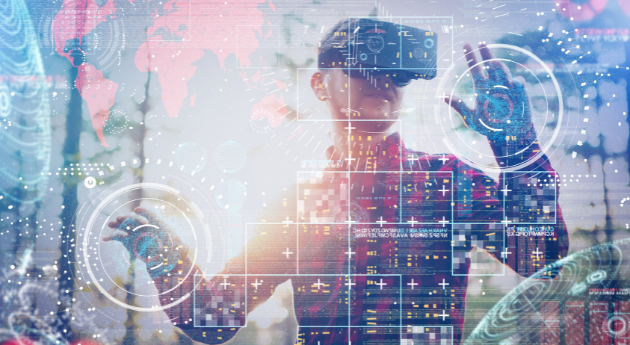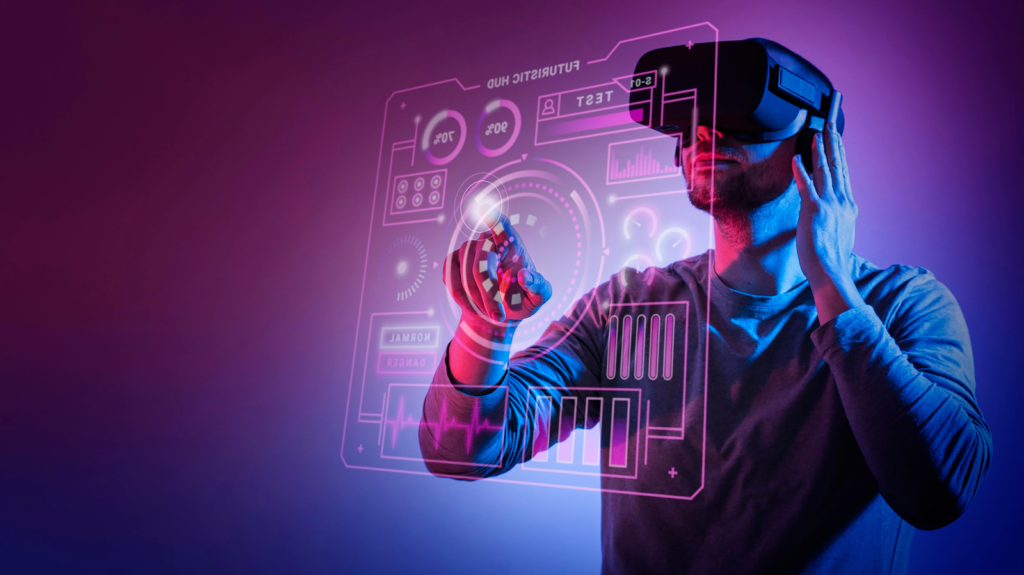
How Is AR/VR Aiding Employee Trainings In The New Normal?
The Great Resignation has put immense pressure on businesses to continuously adapt to the evolving market demands. Call it the aftermath of the pandemic, the last couple of years have been challenging for businesses as far as employee retention and attrition are concerned. The L&D function in every organization is becoming a key for them to reorient themselves in ways that will lead to greater long-term success and growth.
The advancements and innovations in technology are playing a crucial role in facilitating efficient training initiatives while improving agility and scalability. The primary focus for every L&D team today is to enhance the learner experience. Technologies like Augmented Reality (AR) and Virtual Reality (VR) are spearheading the learning experience. For instance, over 50% of the respondents claim that collaborative and immersive tech such as AR/VR/MR is among the top 3 L&D trending learning formats of 2022, according to a recent survey.
Immersive learning has been proven to greatly benefit the learners as it increases knowledge retention rates, enhances learning experiences, and improves learning outcomes. Let’s take a closer look at how immersive technologies like AR and VR are impacting employee training today, especially in a growing hybrid and remote-first culture:

How AR is Enhancing Employee Trainings
Employee onboarding and orientation:
With augmented reality, employee onboarding has become innovative and allows users to jointly explore and learn. The advanced visualization capabilities facilitate real connections between organizations and their workforce. Using AR techniques, for example, the virtual tour of the office for new recruits is made dynamic, with media, photos, and messages appearing as the user interacts with the system. With improved step-by-step instruction, communication, and collaboration, AR training for new recruit orientation makes remote onboarding of staff seamless.
Employee retention:
AR training boosts hands-on experiences, making training more interesting, and builds muscle memory, which improves knowledge retention and recall. Such upskilling and reskilling activities raise employee engagement and promotion chances, hence boosting employee retention. In addition, businesses have realized that investing in training existing employees is significantly more cost-effective than hiring new employees.
High-complexity and high-risk training:
In organizations that require employees to work in challenging and dangerous environments, augmented reality-based training has gained greater acceptance and application. The overlaying of text and interactive visual components over actual settings and sophisticated machines can aid in the training of new learners without putting their safety at risk or exposing them to harm. According to Gartner’s Future of Field Service, more than 50% of field service management deployments will include mobile augmented reality collaboration and knowledge-sharing tools by 2025. Using AR-based remote assistance, technicians may readily access training manuals, tutorials, and diagrams during equipment setup and troubleshooting, as well as receive expert assistance as needed.
Product/service training:
As an alternative to manuals and guides, augmented reality (AR) can be a great tool for product service and quality assessment training. Using interactive learning based on augmented reality, learners can know precisely what to inspect when doing quality inspections and obtain comprehensive product information. They can practice without any real-world consequences if something goes wrong in the virtual environment.
Employee safety training:
Using augmented reality to provide safe simulations of harmful situations during employee safety training, such as fire drills, can reduce training risks and operating expenses. AR-based training tools can provide learners with real-world experience on how to manage such dangerous circumstances and enhance their information retention compared to watching a presentation or reading a safety manual.
How VR is Enhancing Employee Trainings
Real-time Field Expert Assistance:
VR-based training guides can be extremely useful for real-time technical support, on-field assistance, machine setup, and remote, real-time assistance. With VR tools, it is possible to identify issues in machinery and connect with experts in remote locations to assist in the efficient resolution of problems.
Soft-skills training:
Virtual reality can help employees improve their soft skills, such as leadership and management, more quickly and with better results. Virtual reality simulates real-life situations, complete with body language and facial expressions, which aids in the development of skills such as active listening, conflict resolution, and more. This is especially helpful for a geographically dispersed workforce working remotely.
Training Feedback:
The VR-based training can be monitored and recorded in real-time. This aids in the analysis and provision of consistent, objective, and detailed feedback. Employees can be shown the recordings to better understand how specific situations can be improved or tackled differently.
Knowledge transfer:
VR training can be very useful in passing on information from professionals in the industry to future generations. This might also aid customers in gathering information about a company’s products and services. VR tools, for example, can make it simple to put together a cabinet purchased from a furniture store.
Suggested Read: Implementing Immersive Tech for Learning? Here are The Top Things to Consider
Immersive technologies are increasingly becoming assistance tools and are the best way to blend the physical and digital worlds to create innovative and interactive learning experiences. They help create smarter, safer, and more effective training experiences across departments and industries.
Adeptus Tech helps businesses make the most of such technological innovations to foster a culture of continuous learning and growth. Initiate a conversation with us today to learn how we can assist you in your journey.
